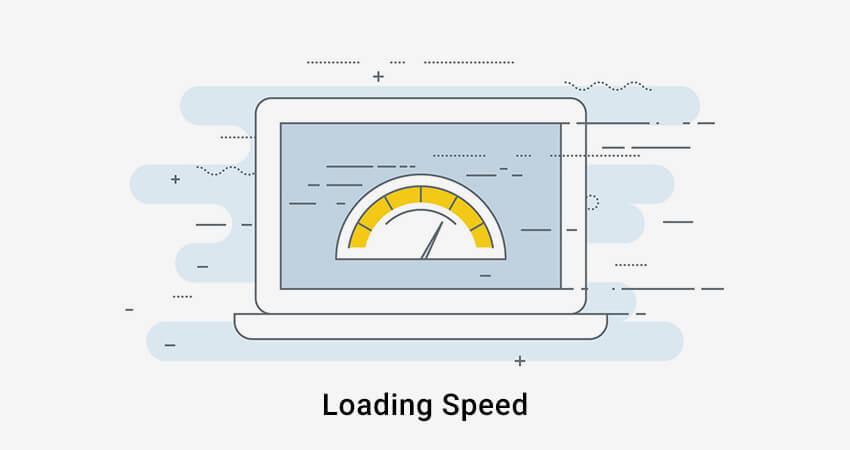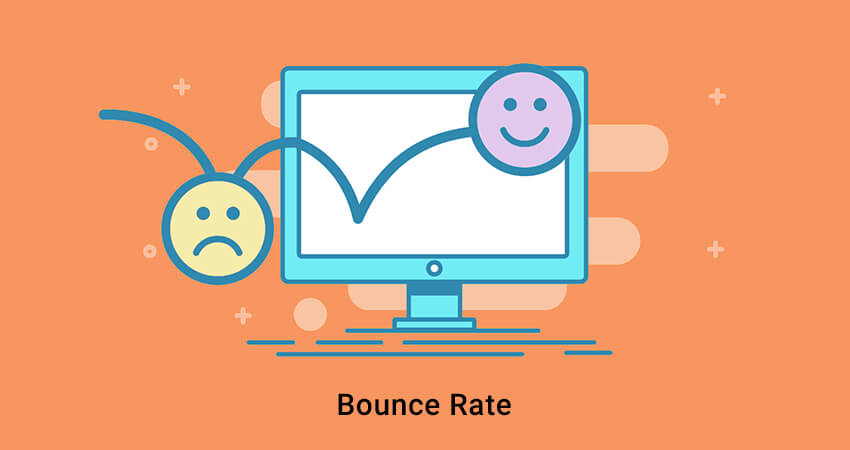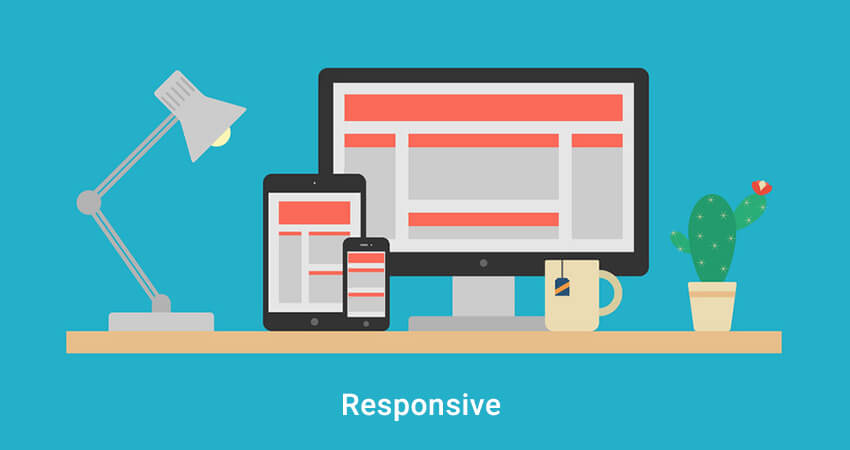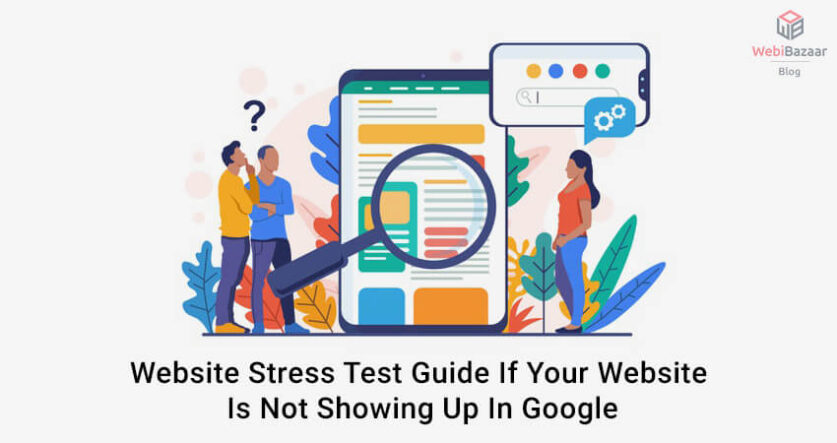If your website is not performing well in google and you are losing your potential customers, now it’s time to act and make your website powerful by analyzing the website stress test guide. You might be thing thinking that your website is designed very well with the latest features in it but is it well enough to rank higher in search engine results?
There are some points you should consider to rank your website higher when someone searches for the products or services you sell. So in this article, we will be talking about what are the factors you should consider if you want your website to rank well in the search engine.
Here is the list of website stress test factors you will need to improve to rank higher in Google:
1. Loading Speed

The website loading speed plays an important role in conversions and user-experience. Sadly, many website owners give priority on website design instead of focusing on its performance.
It does not matter how cool your website looks, it’s loading speed matters more than ever. Nearly half of all internet users anticipate a website to load within 3 seconds or less, many will leave a website if it will take more than 3 seconds to load.
To check your website performance, run Google Lighthouse Test where you will get a detailed report about your website performance, you will also get suggestions to improve your website’s performance and loading speed. By following suggestions and resolving them will improve your website loading speed.
You can improve your website loading speed by reducing the size of CSS, HTML and JavaScript files, reduce redirects, remove render-blocking JavaScripts, improve server response time, etc.
2. Bounce Rate

When you are analyzing your website data, you may encounter a high bounce rate, which means the number of people who are coming to your website and leaving your website instantly.
A high bounce rate doesn’t always mean there is a problem with your website. If a visitor lands on your website and searching for an address or business hours, it would not be unusual for a visitor to land and bounce. A visit to your business can still be considered to be a conversion.
The problem is when visitor land, bounce and does not convert. Those are the probabilities we need to focus on. Your job is to find out why people are bouncing back in such high volumes. Reduce your bounce rate with eCommerce Website Templates like Shopify templates, WordPress templates,
To improve your website bounce rate you should consider 4 possible reasons that are Bad content, Poor user experience, Technical errors, Speed issues. If you find out any errors regarding these, you should work hard to improve it and make your visitors spend a long time on your website.
3. Engagement
A website engagement is not just a soft term having to do with how website visitors feel when they visit your website. It’s also a way to measure how visitors cooperate with your website, what actions they take on your website and even if they eventually end up converting into a paying customer.
Reasons why website engagement matters:
Visitors make a quick judgement about your website.
A slow website loses potential customers.
Return customers can make a huge difference.
Mobile search is huge.
Best ways to make your website more engaging for visitors:
- Make sure your website stress test guide follows a logical structure and have enough whitespace.
- Optimize your website responsiveness & speed.
- Use a straight-forward & logical page/content structure.
- Use different content types.
- Add suggested products and internal links
- Add content upgrades
- Use clear, short and compelling CTAs (Call-to-action) that match the buyer’s journey.
- Enable interactive website search.
4. Pages Visited

Many times, visitors will interact with the same website multiple times after they originally view it. Naturally, it’s not unusual for a visitor to open a page, close that page and search for that website again within a few minutes. Usually, a CRM or CMS will count this as two-page visits since the visitor arrived at the website twice.
Even though the visits happened within the same session. A session is 30 minutes that begins after a visitor first enters a website. During that session, visitors may create multiple page views and even multiple visits.
Once 30 minutes has expired the session ends. If the same visitors go back to your website an hour after primary contact, then Google Analytics will log it as a new session. Visit Webibazaar.com
5. Return Visits
The returning visitor metric can help you trach what happens when someone returns to your website multiple times. These metrics allow marketers to analyze how effective they are at building and maintaining an audience online. This is specifically important tp demonstrate the value of content marketing efforts.
The metrics organize visits according to the number of times a visitor has returned to a website using the following groups – 2-3 visits, 4-9 visits and more than 10 visits.
The return visits rate is the percentage of visits from visitors who have visited the website before. The return visit rate is determined as the number of visits from returning visitors divided by the total number of visits.
6. Time on website
More is better. People will only stay on the websites they like so if people like your website stress test guide then Google will like it too. So design your website in a way that people cannot leave your website without spending some time.
Best practices to make your website visitors spend more time on your website:
- Tidy up your design.
- Improve the readability of your pages.
- Add high-quality compressed images.
- Optimize and beautify website images.
- Add videos for a more interactive experience.
- Make internal linking a habit.
- Offer content upgrades.
- Add comment-worthy content.
- Add success stories.
- Show credibility.
7. Responsive

Responsive website design is a web development approach that creates dynamic changes to the website appearance, depending on the screen size and adjustment of the device being used to view the website stress test guide.
Google now demotes non-responsive websites, no one wants to see a website on their phone if it is not optimized mobile-friendly. So if your website is not optimized mobile-friendly then there will be no chance for your website to rank higher in search engine results.
Responsive design best practices:
- Add important content.
- Test across devices & browsers.
- Test for content order based on the importance.
- Revise device/browser mix every few months.
- Analysis for performance.
- Optimize for mobile-first.
- Test for interactivity.
- Checkout device fonts.
- Test for smooth navigation.
- Test the website visually.
- Audit website pop-ups.
- Check website typography.
8. Robots.txt
A robots.txt file is a set of directions for bots. This file is included in the source file of most websites. Robots.txt files are mostly designed for controlling the activities of good bots like web crawlers since bad bots are not likely to follow the guidance.
Robots.txt is a text file web developers create to instruct web robots how to crawl pages in their website. The robots.txt file organizes how robots crawl the web, access and index content, and serve that content to website visitors.
Robots.txt best practices:
- Make sure you are not blocking any content or sections of your website you want to get crawled.
- Links on pages blocked by robots.txt will not be followed by crawlers
- Do not use robots.txt to avoid sensitive data from appearing in SERP results.
1. W3C Standards
W3C is an international community of member organizations that express web standards so that website looks and works the same in all the web browsers.
Its mission is to lead the world wide web to its full potential by developing standards, protocols and guidelines that ensure it’s long term growth.
Especially, W3C standards for CSS and XML ensure that every website will function the same on any browser.
It compliant CSS and XML coding will also help you improve search engine optimization by allowing search engine robots to crawl through your website quickly and more efficiently.
This is standards also improve issues of accessibility, security, privacy, etc. while helping to balance speed, honesty, public accountability and quality on the internet.
That compliant websites are cross-platform adaptable that means in addition, to working on any browser, it can also be accessed by mobile phones, screen readers and text browsers, and other devices.
Hope this article will be helpful for making but your website performance better so your website can rank higher in search engine results from where you can drive traffic to your store organically and scale up your conversions.
